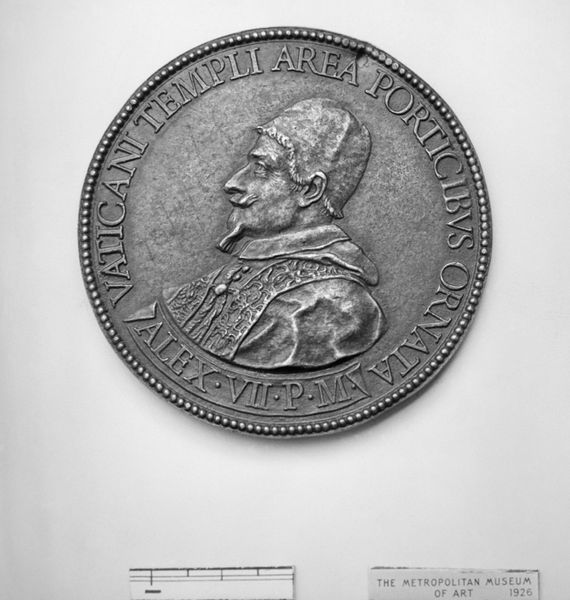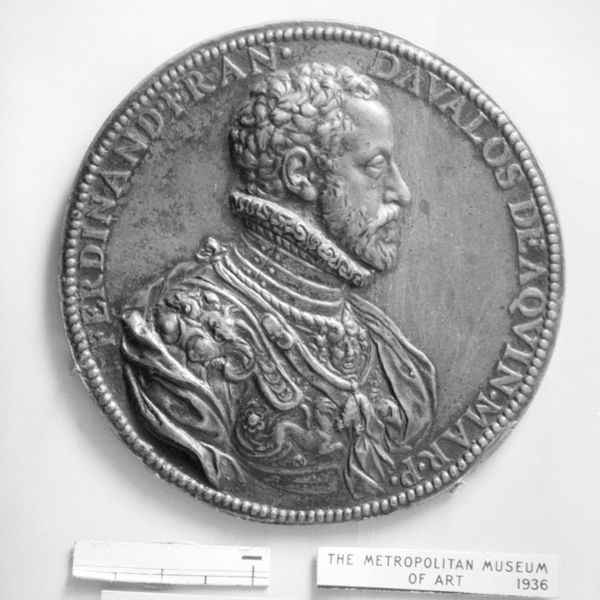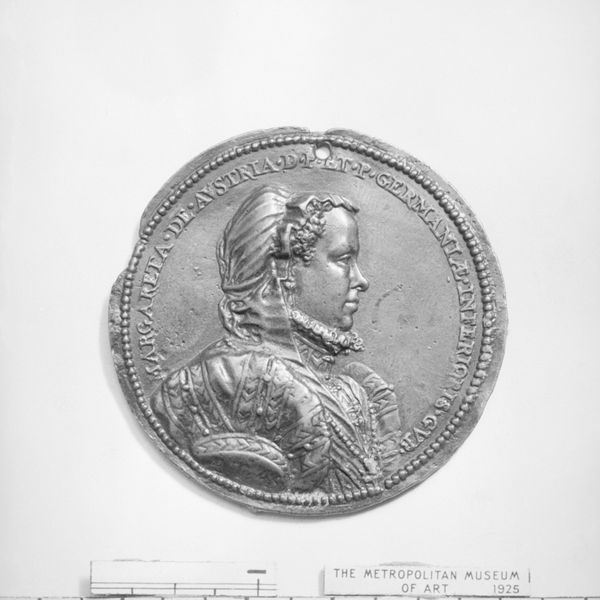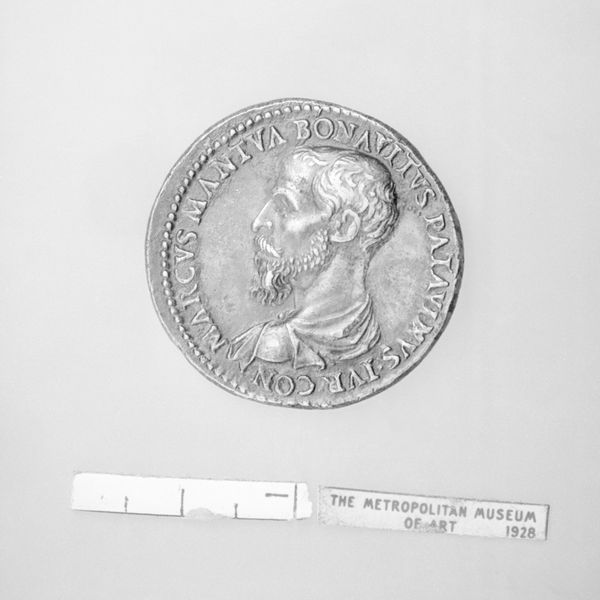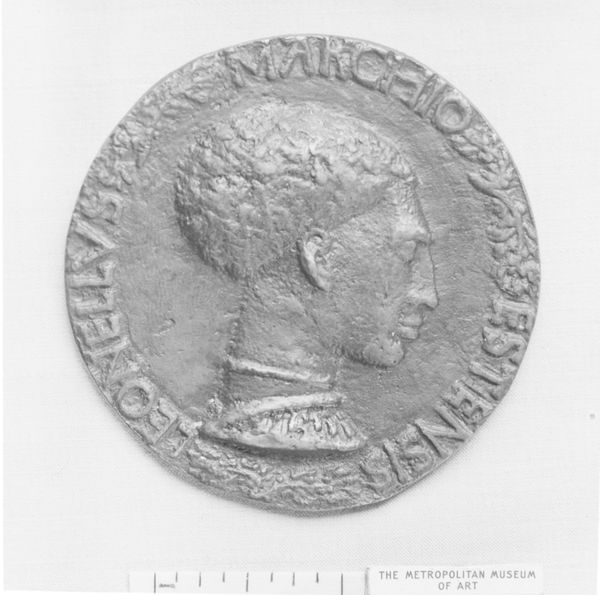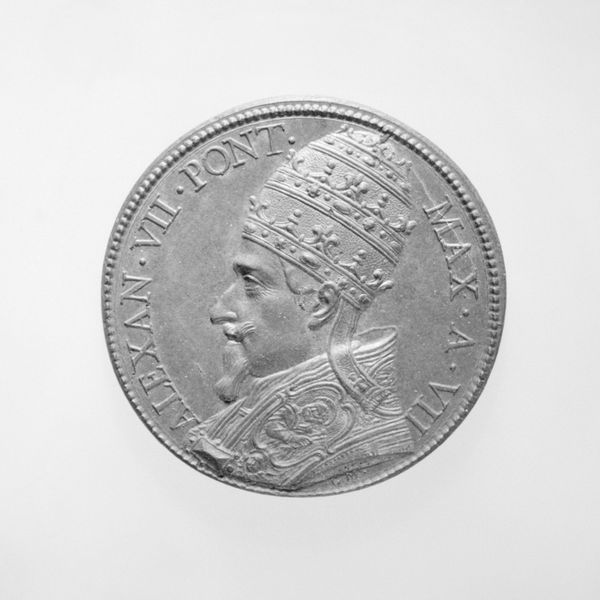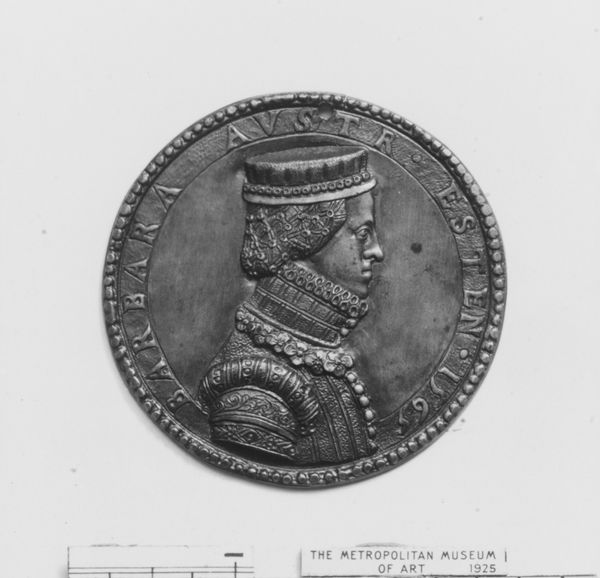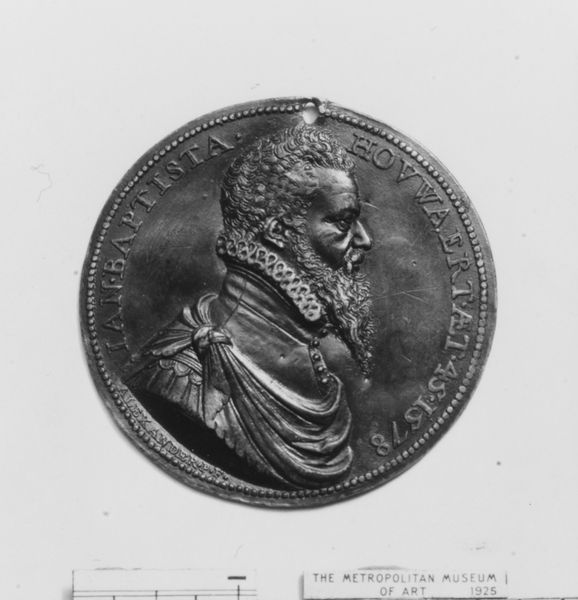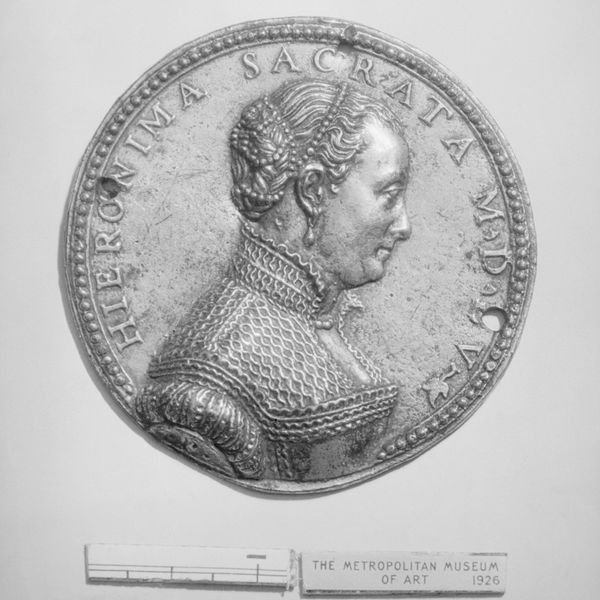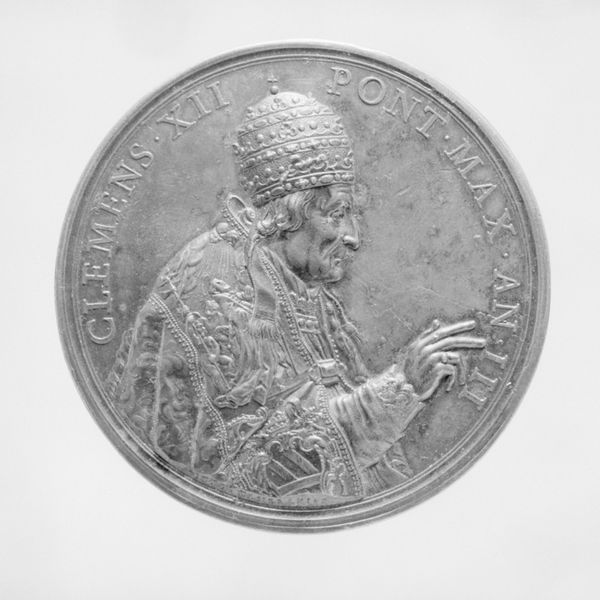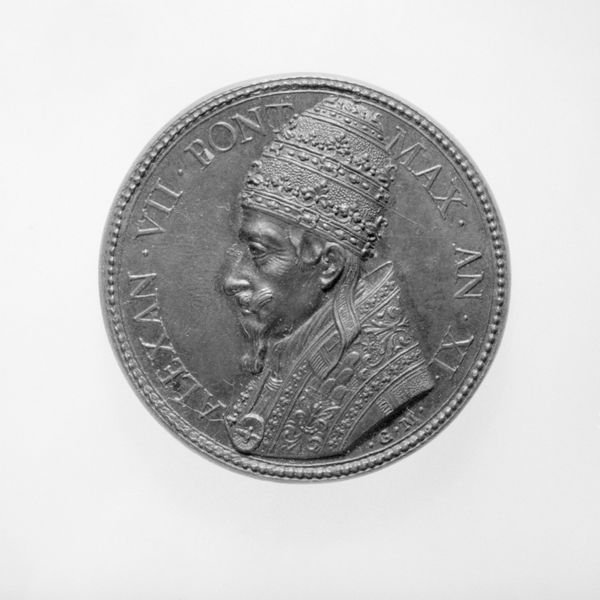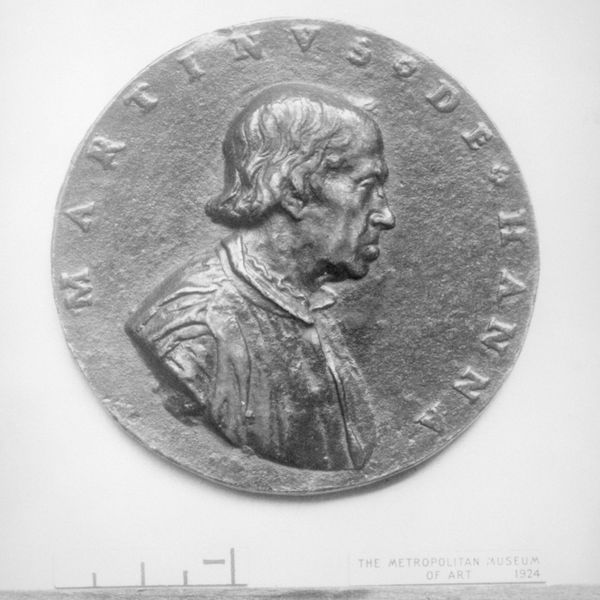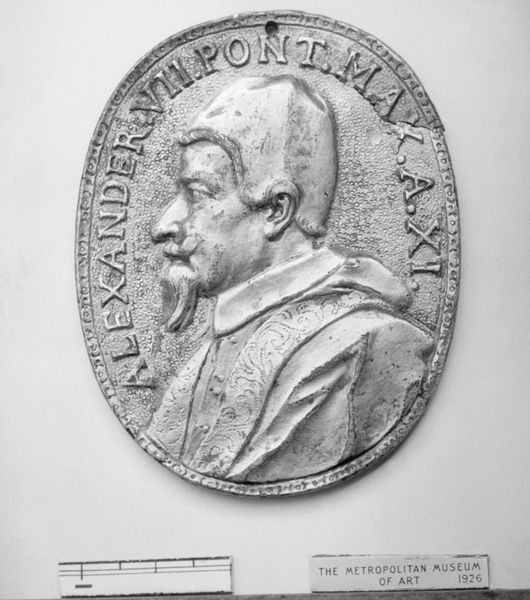
metal, relief, sculpture
#
portrait
#
medal
#
metal
#
relief
#
11_renaissance
#
sculpture
#
decorative-art
#
italian-renaissance
Dimensions: Diameter: 2 1/2 in. (64 mm)
Copyright: Public Domain
Curator: Let's examine this medal featuring Emperor Charles V. Created around 1537 by Hans Reinhart the Elder, it is crafted from metal in relief and resides here at the Metropolitan Museum. Editor: It strikes me as incredibly stiff. The Emperor’s gaze is averted, the detailing in the robes…heavy. A feeling of controlled power, perhaps? Curator: Indeed, power meticulously wrought. Consider the metal itself—bronze, I presume, although that’s difficult to discern here. Its enduring nature makes it an ideal vehicle to preserve Charles' image and authority for posterity. And the repetitive, precise lettering around the edge. Every detail serves the political agenda. Editor: Right, but visually, the symmetry is paramount. Look at the placement of his head within the circular frame, the balance of light and shadow to accentuate the detail in the clothes. Even without knowing who he is, there is a commanding presence conveyed. Curator: But doesn’t knowing *who* he is fundamentally change that viewing? We're talking about the Holy Roman Emperor here, with vast lands and complex political struggles! This isn't just abstract symmetry; it’s propaganda, communicating an idealised imperial image to potential subjects and rivals. The medium— a metal object, likely reproduced—allows for wide circulation. Editor: Perhaps, yet consider its tactile nature as sculpture. I find how the texture conveys richness so remarkable. Curator: I’m curious about the division of labor in its making. Was it the design and conception of a court artist alone? What of the workshop assistants who physically produced it, or the merchants who distributed it? We mustn’t forget the networks of craftsmanship and economic exchange underpinning this 'portrait' of power. It really demonstrates not just political will, but tremendous productive output. Editor: I'm interested how the composition invites repeated viewing and examination of intricate formal details. The inscription’s texture contrasting against the polished face gives incredible depth. And from there our gaze might naturally settle on the small decorative element grasped in the hand as an object of supreme craftsmanship. Curator: Yes. And beyond a patron's name, Reinhart's labor, the hands of the maker are almost completely obscured and, to a large degree, immaterial in our interpretations today. So often are historical making processes are undervalued. Editor: Perhaps. In closing, I notice that, technically, it has such remarkable mastery—this use of metal and depth and its detail creates such a powerful sense of both physical presence and also distant grandeur. Curator: From my perspective, understanding that Reinhart created this at a nexus of power and craft unveils this decorative work not merely as formal exercise, but also one involving tremendous labor practices which produced specific effects of control.
Comments
No comments
Be the first to comment and join the conversation on the ultimate creative platform.
